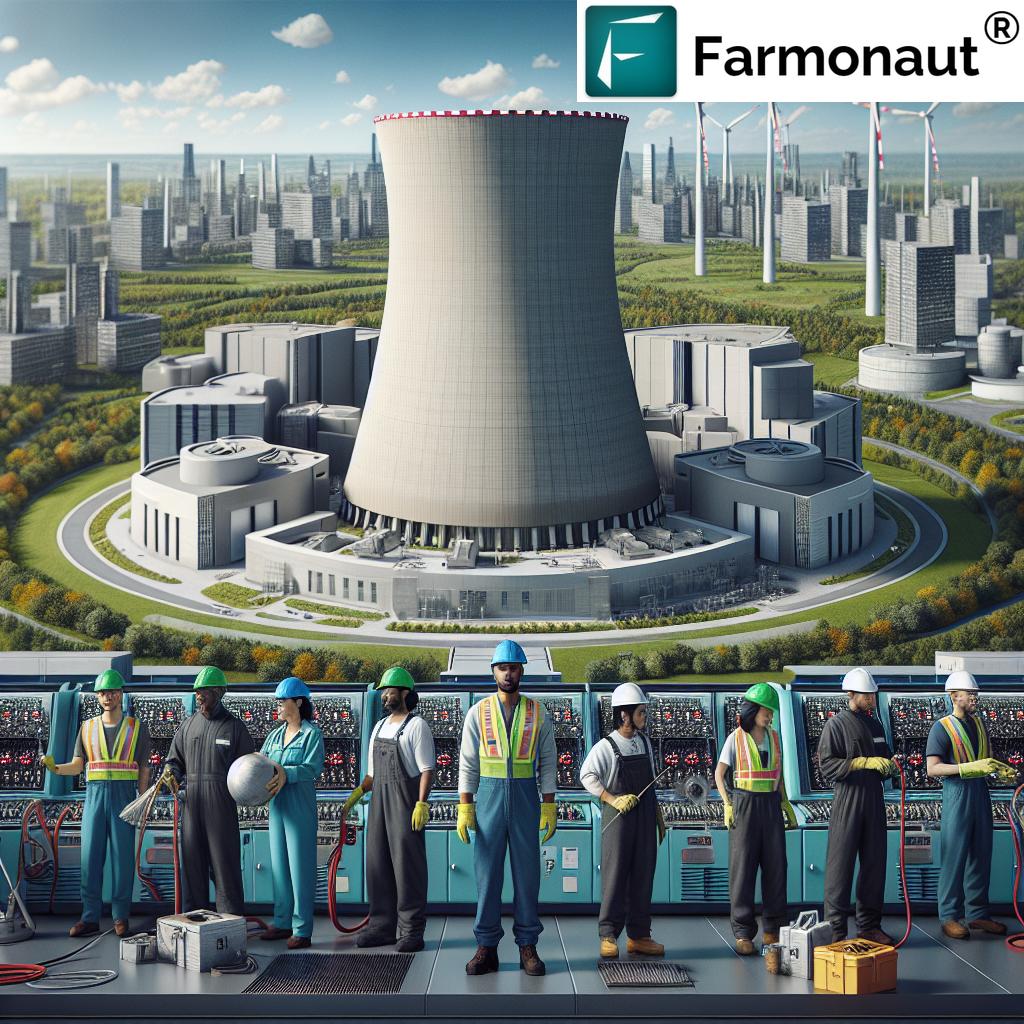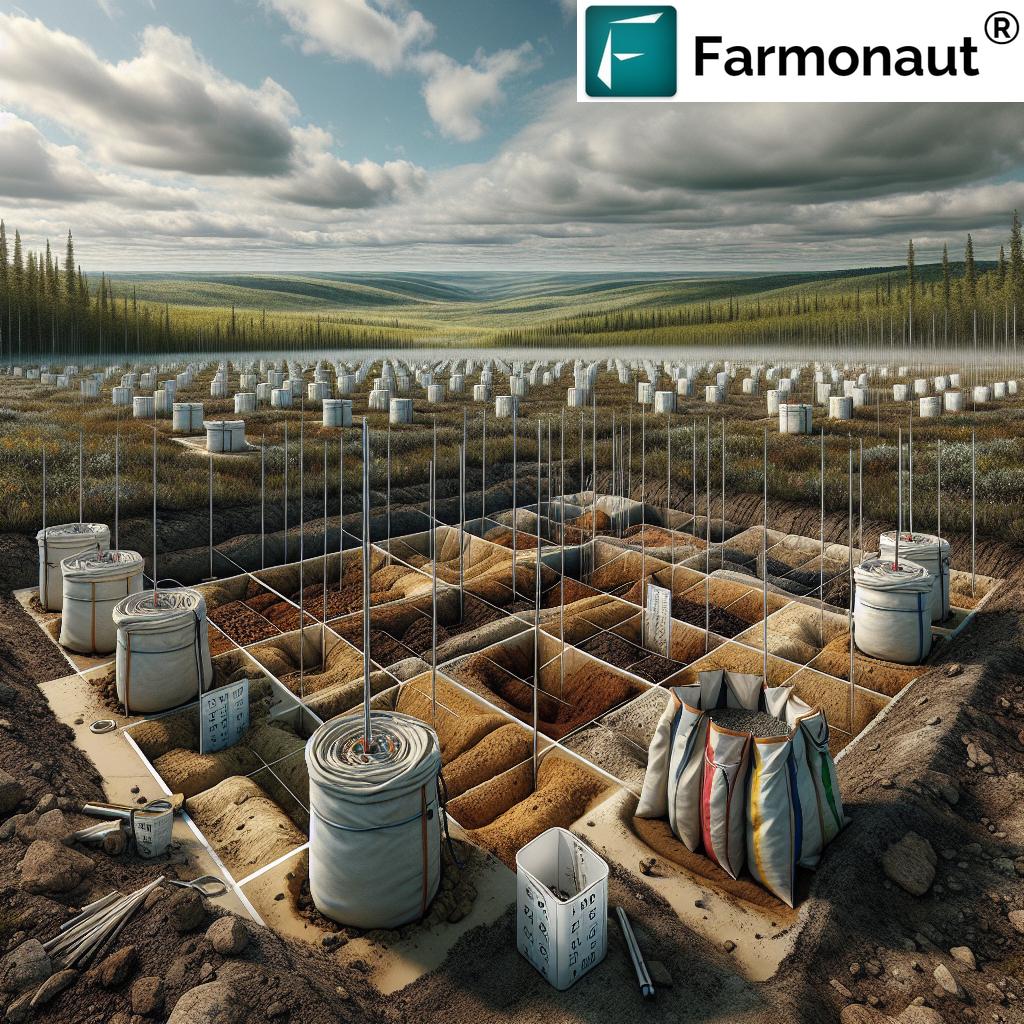Canada’s Nuclear Future: Investing in Clean Energy and Job Creation
“Canada’s nuclear sector is set to create thousands of new jobs through investments in clean energy projects.”
As we look towards a cleaner, more sustainable future, Canada is making significant strides in its nuclear energy sector. Our commitment to innovative nuclear technologies is not just about powering homes and businesses; it’s about creating a robust economy, generating high-quality jobs, and leading the global charge against climate change. In this comprehensive exploration, we’ll delve into how Canada is shaping its nuclear future, with a focus on cutting-edge CANDU reactor technology and the promising frontier of small modular reactors (SMRs).
The Role of Nuclear Energy in Canada’s Clean Energy Strategy
Nuclear energy plays a pivotal role in Canada’s energy landscape, providing a vital source of non-emitting electricity to our national grid. As we face increasing demands for resilient and secure energy supplies, our government is taking proactive steps to ensure Canada remains at the forefront of the global nuclear industry.
The Canadian nuclear energy sector is poised for significant growth, with strategic investments aimed at:
- Expanding clean electricity generation
- Developing and deploying small modular reactors (SMRs)
- Modernizing existing CANDU reactor technology
- Creating thousands of high-skilled jobs across the country
- Supporting economic development in various regions
These initiatives are not just about maintaining our energy independence; they’re about solidifying Canada’s position as a global leader in nuclear innovation and clean energy solutions.

CANDU Reactor Technology: Canada’s Homegrown Nuclear Innovation
At the heart of Canada’s nuclear strategy lies our homegrown CANDU (Canada Deuterium Uranium) technology. This innovative reactor design has been the backbone of our nuclear fleet for decades and has been successfully exported to support our allies in achieving energy security worldwide.
Key advantages of CANDU technology include:
- Use of natural uranium fuel, eliminating the need for enrichment
- On-power refueling capabilities, increasing overall reactor efficiency
- Advanced safety features, including multiple independent shutdown systems
- Ability to produce medical isotopes for cancer treatment
The Government of Canada recently announced a preliminary agreement with AtkinsRéalis to support the development and modernization of a new, large-scale CANDU reactor, known as the MONARK project. This investment of up to $304 million over four years demonstrates our commitment to advancing Canadian nuclear technology and maintaining our competitive edge in the global market.
Small Modular Reactors: The Next Frontier in Nuclear Innovation
“Small Modular Reactors (SMRs) are being developed in multiple Canadian provinces, including Ontario, Saskatchewan, and Alberta.”
While CANDU reactors continue to be a cornerstone of our nuclear strategy, Canada is also making significant strides in the development of Small Modular Reactors (SMRs). These innovative nuclear technologies offer several advantages:
- Scalability to meet diverse energy needs
- Reduced construction times and costs
- Enhanced safety features
- Potential for off-grid applications in remote communities
The Canadian government is actively supporting SMR development through various initiatives:
- $55 million in funding for Ontario Power Generation’s Darlington New Nuclear Project
- Increased program funding from $24 million to $80 million for Saskatchewan’s SMR pre-development work
- $52.4 million investment for various projects supporting SMR development across Saskatchewan, Alberta, and Ontario
These investments highlight our commitment to diversifying our nuclear portfolio and positioning Canada as a leader in next-generation nuclear technologies.
Job Creation and Economic Impact
The expansion of Canada’s nuclear sector is not just about energy production; it’s a significant driver of job creation and economic growth. The investments in nuclear technology are expected to generate thousands of high-quality jobs across various sectors:
- Engineering and design
- Construction and manufacturing
- Operations and maintenance
- Research and development
- Supply chain management
For instance, the Darlington New Nuclear Project alone is anticipated to create approximately 17,000 jobs in Ontario and an additional 10,000 across Canada during the manufacturing and construction phases. These jobs span a wide range of skill levels and offer long-term, stable employment opportunities in the clean energy sector.
Environmental Benefits and Climate Change Mitigation
As we confront the urgent challenges of climate change, nuclear energy plays a crucial role in reducing greenhouse gas emissions. By investing in nuclear power, Canada is taking significant steps towards achieving its climate goals:
- Zero-emission electricity generation during operation
- Reduction of reliance on fossil fuels
- Support for the integration of renewable energy sources
- Contribution to Canada’s net-zero emissions target by 2050
The environmental benefits of nuclear energy extend beyond emissions reduction. Nuclear power plants have a small land footprint compared to other energy sources and do not produce air pollutants associated with fossil fuel combustion.

Partnerships and Collaboration
The success of Canada’s nuclear future relies on strong partnerships and collaborations across various sectors:
- Government agencies and regulatory bodies
- Private sector companies and utilities
- Academic and research institutions
- Indigenous communities
- International partners and allies
These collaborative efforts ensure that our nuclear initiatives benefit from diverse expertise, foster innovation, and address the unique needs of different regions and communities across Canada.
Uranium Mining: Fueling Canada’s Nuclear Future
Canada’s robust nuclear energy sector is supported by our world-class uranium mining industry, particularly in Saskatchewan. This synergy between uranium production and nuclear technology development offers several advantages:
- Secure domestic fuel supply for CANDU reactors
- Export opportunities for Canadian uranium
- Economic benefits for uranium-producing regions
- Reduced reliance on foreign energy sources
By leveraging our natural resources and technological expertise, we’re creating a sustainable and self-sufficient nuclear energy ecosystem that benefits both our economy and the environment.
Investments Across Canada: A Regional Perspective
The Canadian government’s commitment to nuclear energy is evident in its investments across multiple provinces. Let’s take a closer look at how different regions are benefiting from these initiatives:
Ontario
- $55 million for the Darlington New Nuclear Project
- Development of three GE Hitachi BWRX-300 SMRs
- Potential to power approximately 900,000 homes
Saskatchewan
- $80 million for SMR pre-development work
- Support for environmental assessments and regulatory studies
- Community and Indigenous engagement initiatives
Alberta
- Inclusion in the $52.4 million investment for various nuclear projects
- Exploration of SMR potential for oil sands applications
- Development of new nuclear capacity in the province
These regional investments demonstrate our commitment to fostering nuclear innovation and clean energy development across Canada, ensuring that the benefits of our nuclear future are widely distributed.
The Role of Innovation and Research
Canada’s nuclear future is being shaped by cutting-edge research and innovation. Our investments in nuclear technology are not just about maintaining the status quo; they’re about pushing the boundaries of what’s possible in clean energy generation. Key areas of focus include:
- Advanced materials for reactor components
- AI and machine learning applications in nuclear operations
- Enhanced safety systems and accident prevention
- Nuclear waste management and recycling technologies
- Integration of nuclear power with other clean energy sources
By fostering a culture of innovation in our nuclear sector, we’re ensuring that Canada remains at the forefront of global nuclear technology development.
International Collaboration and Export Opportunities
Canada’s expertise in nuclear technology presents significant opportunities for international collaboration and export. Our CANDU reactors have already been successfully deployed in several countries, and our emerging SMR technologies are garnering interest worldwide. Key aspects of our international nuclear strategy include:
- Technology transfer and knowledge sharing with partner nations
- Collaborative research and development projects
- Export of Canadian nuclear technology and expertise
- Support for global nuclear safety and non-proliferation efforts
These international initiatives not only boost our economy but also contribute to global efforts in combating climate change and promoting clean energy adoption.
Addressing Challenges and Public Concerns
While the future of nuclear energy in Canada is promising, it’s essential to address challenges and public concerns transparently. Some key areas of focus include:
- Nuclear waste management and long-term storage solutions
- Ensuring robust safety measures and emergency preparedness
- Addressing public perception and educating communities about nuclear energy
- Balancing costs and benefits of nuclear projects
- Integrating nuclear power with renewable energy sources
By proactively addressing these challenges, we can build public trust and ensure the sustainable growth of our nuclear sector.
The Future of Nuclear Energy in Canada: A Vision for 2050
As we look towards 2050, Canada’s nuclear energy landscape is set to evolve significantly. Our vision for the future includes:
- A diverse mix of large-scale CANDU reactors and SMRs
- Increased integration of nuclear power with renewable energy sources
- Advanced fuel cycles and waste management technologies
- Expanded use of nuclear energy in non-electricity applications (e.g., hydrogen production, desalination)
- A thriving ecosystem of nuclear innovation and research
This future not only ensures Canada’s energy security but also positions us as a global leader in clean energy technology and climate change mitigation.
Nuclear Energy Investment and Impact in Canada
| Province | Investment Amount (CAD) | Project Type | Estimated Job Creation | Projected Energy Output (MW) | Estimated CO2 Emissions Reduction (tonnes/year) |
|---|---|---|---|---|---|
| Ontario | $55 million | SMRs (3 GE Hitachi BWRX-300) | 17,000 | 900 | 2,700,000 |
| Saskatchewan | $80 million | SMR Pre-development | 5,000 | 300 (estimated) | 900,000 |
| Alberta | Part of $52.4 million investment | SMR Development | 3,000 | 300 (estimated) | 900,000 |
| National Total | $491.4 million+ | Various | 25,000+ | 1,500+ | 4,500,000+ |
Conclusion: Powering Canada’s Clean Energy Future
Canada’s investment in nuclear energy represents a bold step towards a cleaner, more sustainable future. By leveraging our expertise in CANDU technology, developing innovative SMRs, and fostering a culture of nuclear innovation, we’re not just addressing our energy needs – we’re creating jobs, driving economic growth, and taking decisive action against climate change.
As we move forward, the collaboration between government, industry, research institutions, and communities will be crucial in realizing the full potential of our nuclear future. With continued investment, innovation, and commitment to safety and sustainability, Canada is well-positioned to lead the global transition to clean energy and create a prosperous, low-carbon future for generations to come.
FAQ Section
1. What is CANDU reactor technology?
CANDU (Canada Deuterium Uranium) is a Canadian-designed pressurized heavy-water reactor that uses natural uranium as fuel and heavy water as both coolant and moderator. It’s known for its unique ability to be refueled while operating and its advanced safety features.
2. How do Small Modular Reactors (SMRs) differ from traditional nuclear reactors?
SMRs are smaller in size and capacity compared to traditional reactors. They are designed to be modular, allowing for factory fabrication and easier transportation to installation sites. SMRs offer scalability, reduced construction times, and potential applications in remote or off-grid locations.
3. What are the main benefits of investing in nuclear energy for Canada?
Key benefits include clean electricity generation, job creation, economic growth, energy security, and significant reductions in greenhouse gas emissions. Nuclear energy also supports the integration of renewable sources and provides a stable baseload power supply.
4. How is Canada addressing nuclear waste management?
Canada has a comprehensive approach to nuclear waste management, including research into advanced fuel cycles and long-term storage solutions. The Nuclear Waste Management Organization (NWMO) is leading efforts to develop a deep geological repository for the long-term management of used nuclear fuel.
5. What role does uranium mining play in Canada’s nuclear strategy?
Canada, particularly Saskatchewan, is a major global uranium producer. This domestic supply supports our CANDU reactors and provides export opportunities. The synergy between uranium mining and nuclear technology development strengthens Canada’s position in the global nuclear industry.
Earn With Farmonaut: Affiliate Program
Earn 20% recurring commission with Farmonaut’s affiliate program by sharing your promo code and helping farmers save 10%. Onboard 10 Elite farmers monthly to earn a minimum of $148,000 annually—start now and grow your income!
For developers interested in integrating satellite and weather data into their agricultural applications, check out the Farmonaut API and the comprehensive API Developer Documentation.
















